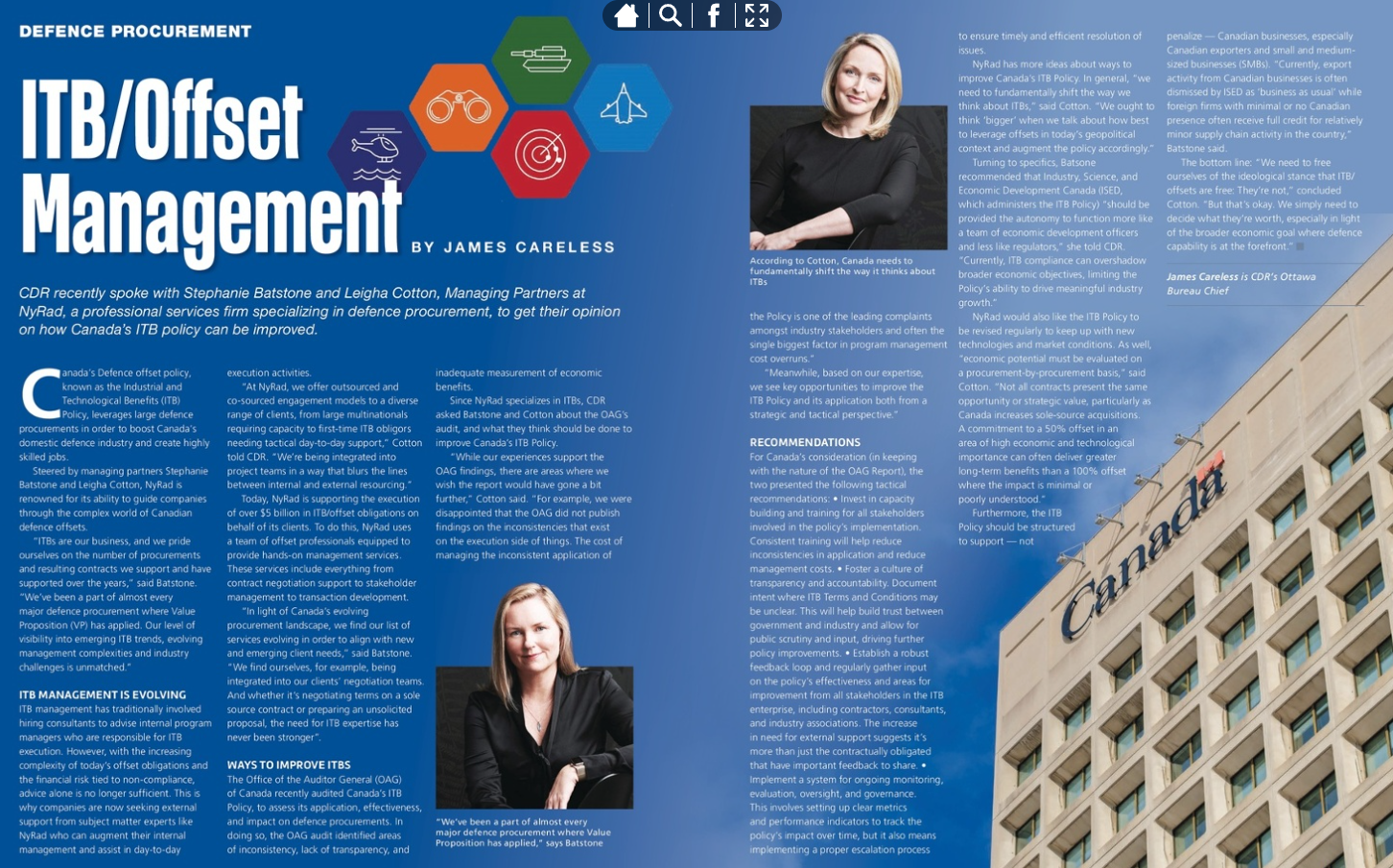ITB Approval Timelines - Challenges and Opportunities
At NyRad, we are involved in the day-to-day management of Industrial and Technological Benefit (ITB) obligations and have been for years. During our time, we have experienced both extremes when it comes to Innovation, Science and Economic Development’s (ISED) responsiveness. Some teams at ISED are exceptionally efficient when it comes to reviewing and approving transaction sheets, verifying annual reports and providing credits. Other teams, however, are less than efficient. This lack of predictability when it comes to response time is not only frustrating, but detrimental to our clients’ businesses, supply chain processes, and the Canadian innovation ecosystem writ large.
While ISED has a service standard it works toward to approve transaction sheets and award ITB credits, the service standard is six (6) months. Not only is this incredibly long, but it’s also not something industry can depend on. Having to wait six to nine months to get approval and credit for investments, affects cash flow and sets the stage for uncertainty in the market. Contrary to what some might believe, the impact is also felt far beyond the Prime Contractor level and can cause friction across the supply chain.
Further complicating things is the lack of transparency around ISED’s review and approval process. While ISED discloses the Department’s transaction eligibility criteria, they do not disclose the internal governance process or their review timeline. ITB obligors have little insight into who is reviewing their transactions, at what level of the ISED organization, nor when they might expect a response. This makes it hard for Obligors to plan and optimize their investments. It also serves as a barrier to investment approval, causing some projects to languish.
According to ITB contract terms, Prime Contractors and their partners (eligible donors) must submit annual ITB reports to ISED 60 days after the end of the annual Reporting Period. This challenging task involves corporate wide engagement. The finance department, supply chain, human resources, and corporate executives are all involved in collecting and presenting the data that ISED requests. And because the data format required often necessitates tedious manual adjustment – the process can take excessive time and resources. After submitting said reports within 60 days, companies must wait six to nine months or longer for ISED to verify and credit their claims. This timeline can lead to a backlog of unverified claims that can affect the fulfillment and accuracy of the ITB obligation.
By way of solution, we offer the following suggestions:
- Provide ISED desk officers the authority to approve transaction sheets based on clear and consistent criteria. This will eliminate unnecessary reviews and help reduce the transaction backlog for senior managers. While this change requires a stringent training program for desk officers that ensures a consistent level of understanding – not only of the ITB terms and conditions but also the intent of the terms, the long-term benefit of such a change stands to serve Canada and Industry alike.
- Ask recipient companies to provide certifications as supporting documentation for annual report claims. This will help reduce the time ISED spends on verifying recipient claims. This will not only reduce ISED’s workload, it will increase the trust and confidence in the policy, and ultimately accelerate the path to ITB credits for ITB obligors.
We hope that these suggestions are helpful and constructive. Working together can make the ITB Policy more effective and efficient for all stakeholders.
You May Also Be Interested In...

Editorial: ITB/Offset Management -How Canada’s ITB Policy Can Be Improved
Excited to share that NyRad is featured in the latest edition of the Canadian Defence Review.


